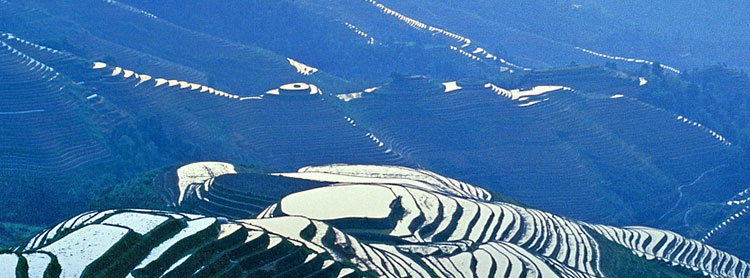
 Discover Guilin
Discover Guilin
Ziyuan County is located in the hinterland of Yuechengling Mountains in the northeast of Guangxi Zhuang Autonomous Region. It is the north gate of Guangxi, 98 kilometers away from Guilin. the Maoer Mountain in its territory is the highest peak of South China as well as one of the birthplaces of the Yangtze River and the Pearl River system.
Ziyuan County is 65.5 kilometers from its east to west and 63.4 kilometers from its north to south, with a total area of 1941.01 square kilometers. It is a county with inhabited ethnic minorities. By the end of 2022, the county has a total population of 184,000, which consists of 14 ethnic minorities including Miao, Yao, Zhuang, Dong, Hui, Mongolian, Yi, Korean, Manchu, Tujia, Maonan, Molao, Gelao and Li, the population of which is 40,200, accounting for 22.14% of the total population.
The county is with a subtropical monsoon climate. With an average altitude of 800 meters over, it is a typical alpine mountain area with mild climate and enjoyable seasons.
The county has a land area of 1941.01 square kilometers with rich minerals. It is the key forestry county in the region and one of the major producing areas of Chinese fir, masson pine and moso bamboo in the south. According to the statistics of forest resource surveys, there are 164 families of over 1120 species of native plants in the territory, among which the South China hemlock, Tsuga longibracteata Cheng, and the abies ziyuanensis are listed as precious tree species under state-level protection , while the taxus chinensis, South China five needle pine, cryptomeria chinensis, and mahogany chinensis are listed as China's rare and unique tree species. The county’s forest coverage reached 83.01%.
Ziyuan County has rich tourism resources with green mountains, lucid waters, unique stones and serene forests,enrolling China's famous mountains, rivers, waterfalls all in one, which has made itself one of the first outstanding tourism counties in Guangxi. There are many scenic spots in the territory such as Bajiaozhai which is crowned as “the World Natural Heritage, National Forest Park and National Geological Park”, the Zijiang scenic spot known as “a preferred choice for drifting in south China"with flourish mountain and green water, the Wupaihe expedition and drifting scenic spot known as “China's best drifting resort”, the Danxia hot spring resort, the Tianmen Mountain ecological sightseeing spot and the Baoding waterfall scenery area with “one waterfall and nine folds”. There are both Danxia and Karst landscapes in the county.
In 2005, the county was evaluated as one of the most beautiful places in China by the China National Geographic Magazine. In 2014, with its unique advantages in tourism resources, good ecological environment and profound cultural deposits, it was on the “2014 Most Beautiful China List" and won the title of “the Most Beautiful China-destination for cultural tourism, ecological tourism and featured tourism”. The folk festival brand “Mid-July” as a traditional river lantern festival was designated as one of the major ten themes of “Chinese People’s Life Tour” by the National Tourism Administration, and was successfully selected as the national intangible cultural heritage in 2014. Meanwhile, Ziyuan County is one of the 29 counties prioritized in the national plan of regional development and poverty alleviation in Yunnan, Guangxi and Guizhou rocky desertification area (Guangxi) from 2011 to 2020. It is also a poverty-stricken county of autonomous region level.
The major expected targets for 2023 are that the county’s GDP is to grow by 6 percent, the investment in fixed assets by 15 percent, total retail sales of consumer goods by 5 percent, the general public finance budget revenue by 3 percent, the per capita disposable income of urban and rural residents by 6.6 percent and 10 percent, and the binding targets are within the responsibility and target range assigned by the municipal government.